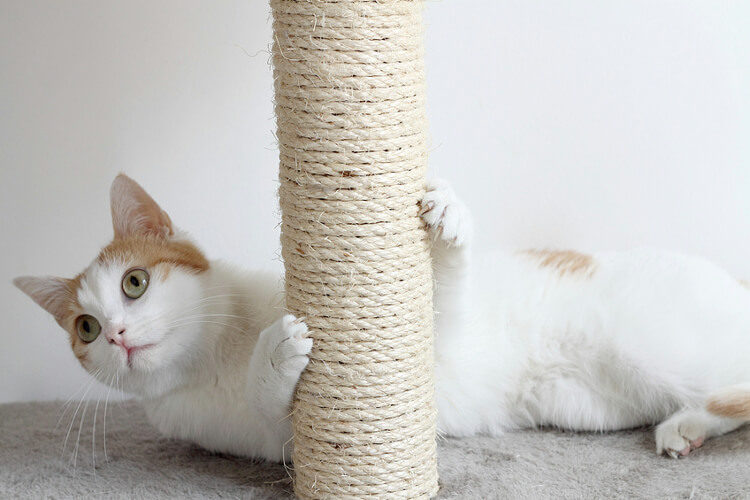Here’s a universal truth about cats: cats love to scratch. It serves an important purpose for cats; it removes dead claw sheaths and keeps claws razor sharp so they can hunt more easily. Scratching is part of a cat’s instincts, and can occasionally create a strain between a cat and their owner. This is why between one-fifth and one-quarter of cats in the United States have been surgically declawed. The procedure, called onychectomy, is a surgery offered by most veterinarians — although fewer and fewer each passing year. Many people, including veterinarians, believe the declawing procedure is cruel and avoid it.
I’ve not only assisted hundreds of declawing procedures back when I was a vet tech: I also declawed all my own cats because it seemed prudent given the sheer number I have. And while I don’t personally oppose the procedure, I have chosen to stop declawing my cats. While most cats recover quite easily from the declaw procedure, it is a major surgery.
Let’s discuss the facts about declawing.
What Does Declawing Involve?
Onychectomy is about more than simply cutting the nails. The surgery not only the removes of the nail and nail bed, but the endmost phylanges (bones) of the front paws—the human equivalent would be the removal of a person’s fingertips to the first knuckle. This amputation doesn’t interfere with the cat’s ability to do most things — in fact, if you leave the rear claws intact, cats can still climb and defend themselves. In fact, if your vet suggests declawing all four paws, I’d suggest finding a new vet.
The Humane Society notes that, “The standard method of declawing is amputation with a scalpel or guillotine clipper. The wounds are closed with stitches or surgical glue, and the feet are bandaged.” I’ve seen vets do both procedures, and in my opinion, the scalpel method heals faster and more cleanly.
Drawbacks of Declawing
Yes, declawing can be painful and requires a bit of a recovery period, and it carries all the regular risks of general anesthesia (it’s worth noting that ‘fat cats’ have the most difficult time recovering because of the weight they put on their paws). Most vets recommended declawing your cats at the same point you spay or neuter them to lower this risk (something that is more challenging to do if you adopt from shelters, most of which don’t offer adoptions until after the cats have been neutered).
Yes, there is a risk of post-surgical infections, and improperly removed claws can grow back over time (the clipper method is more likely to result in regrowth than the scalpel method in my experience). While declawed cats can still climb and fight with back claws, sometimes you do see cats biting more because they don’t have front claws. Most vets recommend keeping declawed cats indoors, but if your kitty somehow escapes but still has back claws, they will have some protection, although it’s hardly ideal.
Alternatives to Declawing
There are many simple alternatives to declawing. First, regular nail care—trimming your cat’s claws with clippers once every one or two weeks—can dramatically reduce damage to furnishings. If you decide to do this, start when your cat is a kitten because trust me when I tell you adult cats HATE having their nails clipped. There are also tiny rubber caps that you can put on cats nails to keep them from harming furniture, but most cats get those off pretty easily — and I’ve seen several cats develop fungal infections while wearing them (think about it like acrylic nails at a nail salon; completely covers the nail and traps in anything problematic).
Your best bet is to offer a wide range of scratching posts and structures in your home home. Something as simple as a carpet remnant secured to a post or board can provide cats with ample opportunities to stretch and scratch
Cats scratch things. It’s what they do. So should you get your cats declawed? I can’t answer that for you. A respected veterinarian can do a great deal to make that process easier for your cat — but there are plenty of drawbacks. I chose to work on training my cats to scratch appropriately instead, and it’s working for my three kitties. What will you do?








